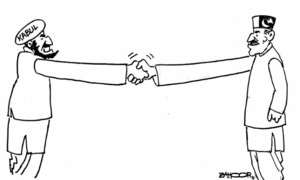NOW, this latest batch of drones may be a little more difficult to ignore than the unmanned aerial vehicles, or UAVs, that have a history of wreaking havoc in the northwest.
The drone camera is fast becoming a fixture at all kinds of public events in the country. It was much in evidence in Lahore, enhancing the security cover for the Youm-i-Ali procession on Sunday. And there is a growing trend to employ the camera-fitted UAVs to telecast news events such as political rallies.
At the moment, they are primed as good utility tools that help any number of groups from security agencies to television channels looking for the best possible live coverage. Elsewhere in the world, organisations such as Amazon are looking to increase the carriage and flight duration capacities of drones to use them to deliver packages.
The acceptance of the advancement has been wide and the predictions are that it is something that Pakistan will not be able to resist. Indeed, given the security challenges here, there is an assertion that Pakistan is where the drone camera is most needed. This sense of excitement, however, must not delay a debate on the drone camera use that brings out all positive and negative aspects of the invention.
Recently when a drone camera developer was asked to comment on “concerns that small drones could have a more sinister use, like peering at small children at play in a park”, his reply was: “Regulations are in place that guard against abusive use.”
In many countries, legislators have been forced by the speed of the drone to quickly firm up the legal defences, of which preventing invasion of privacy is a fundamental aspect. The concepts of privacy are routinely flouted with impunity in Pakistan by the security agencies and, sadly, by the media. While the modern tool has been readily applied here, it is dangerous that no urgency is displayed to have rules that protect against potential abuse.
Published in Dawn, July 22nd , 2014












































